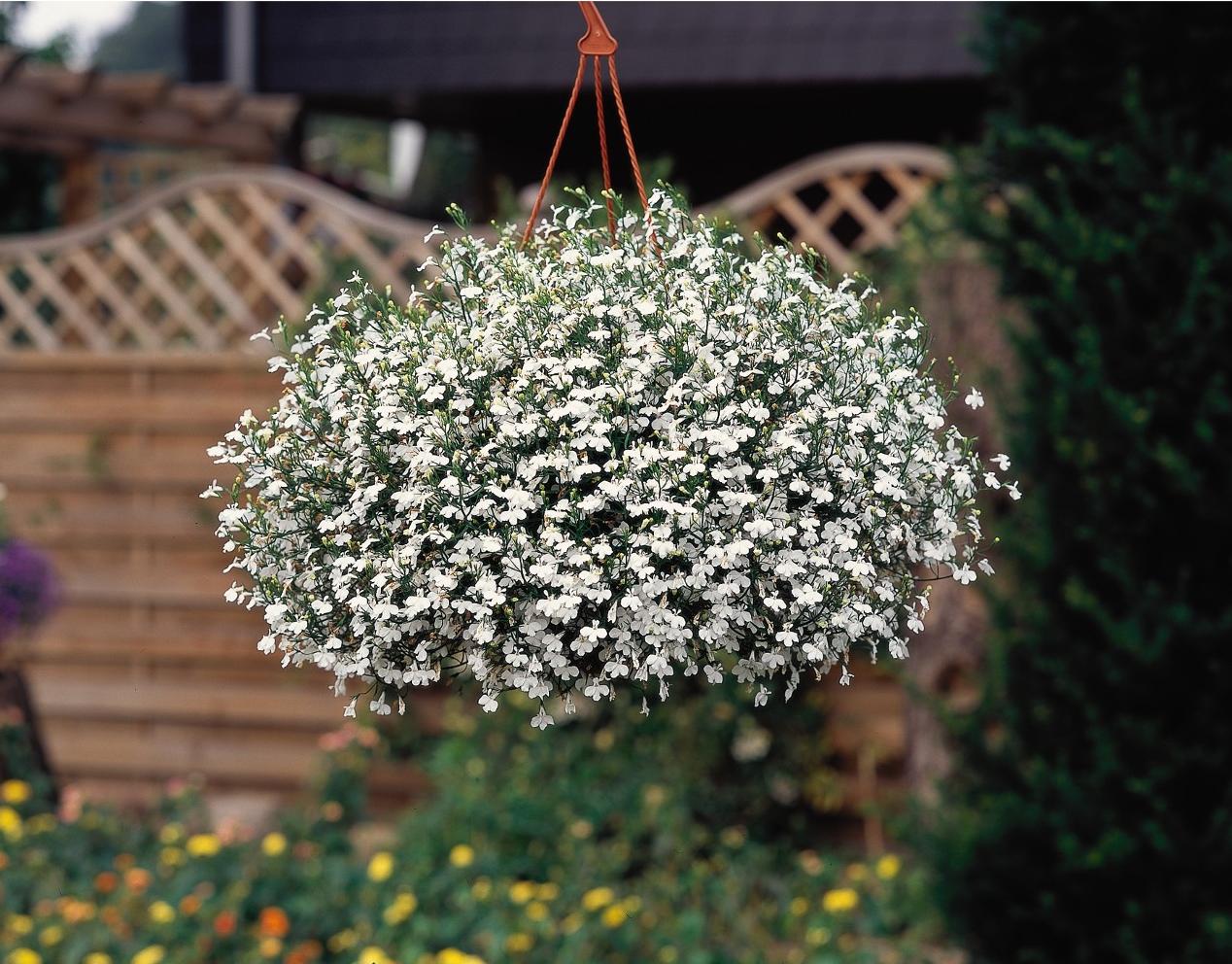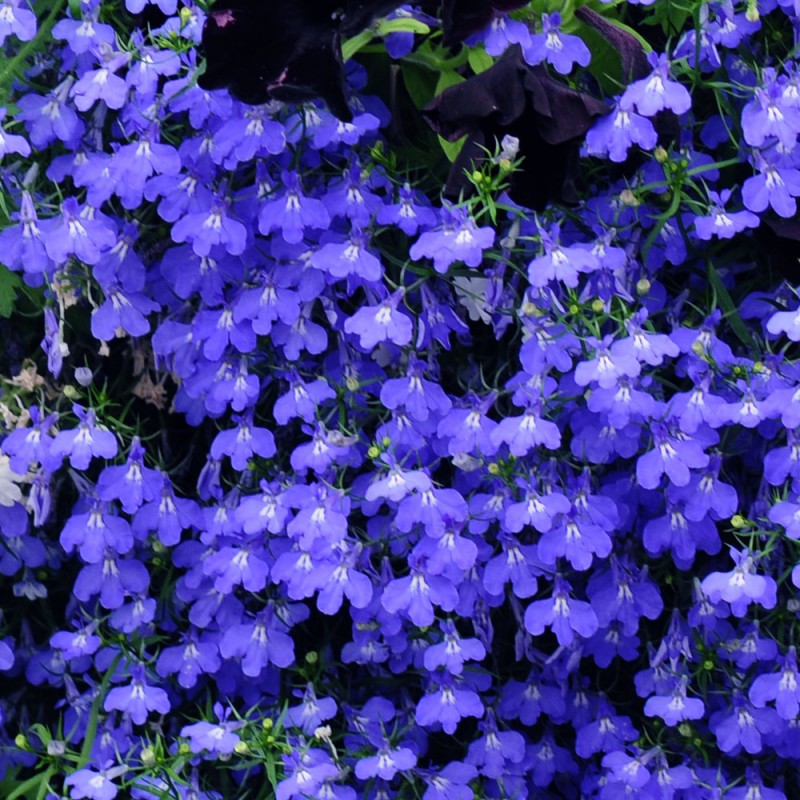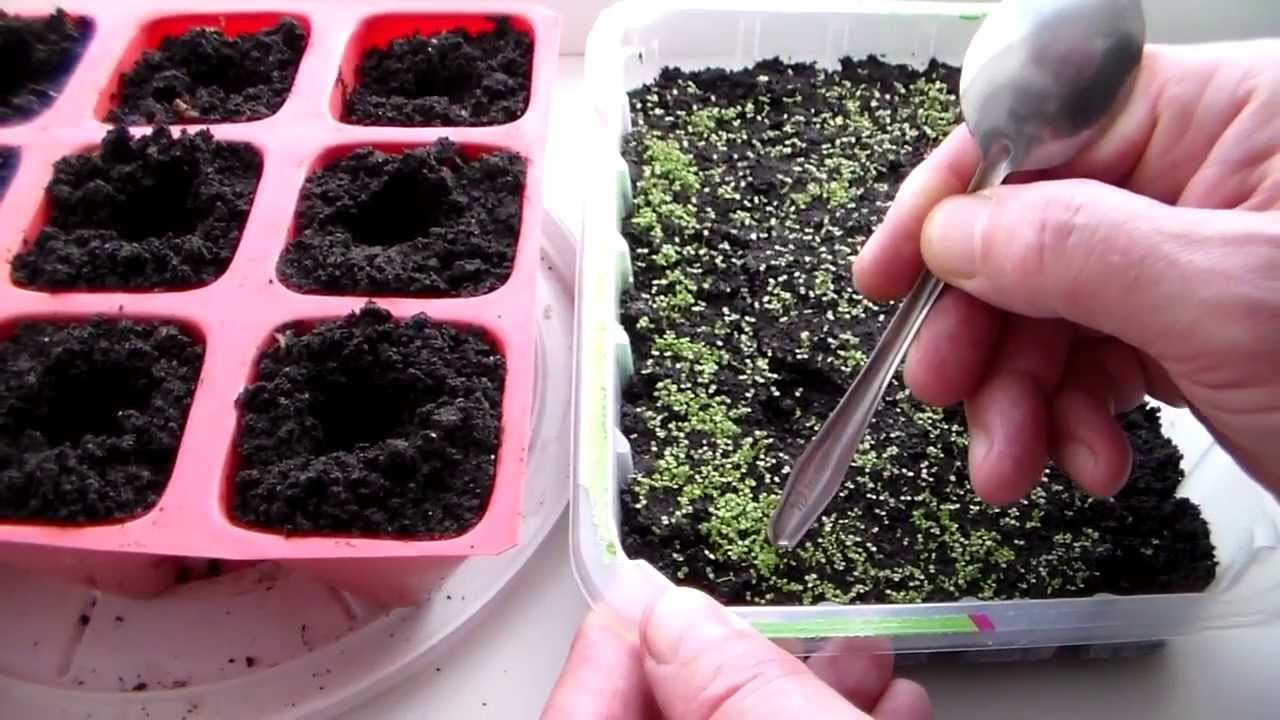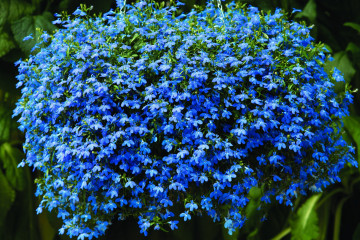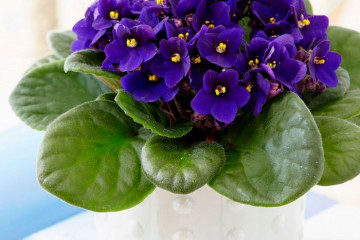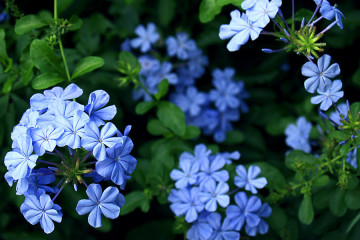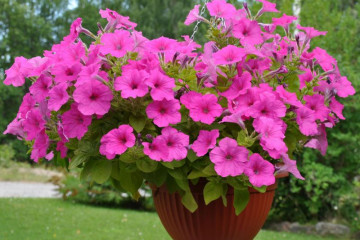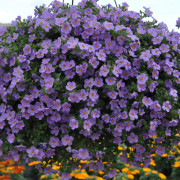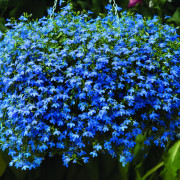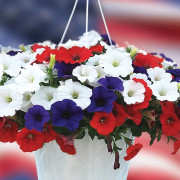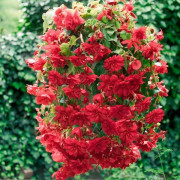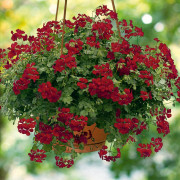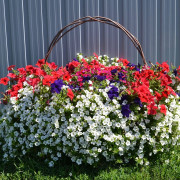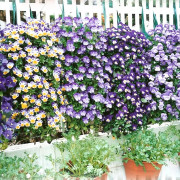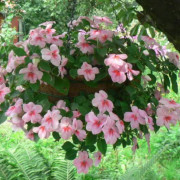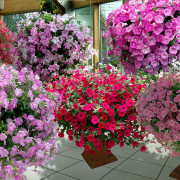How ampelous lobelia blooms - white, blue, blue
Content:
Lobelia ampelous is widely used for landscaping balconies and verandas, it is placed in hanging baskets and pots. These plants attract with abundant and long flowering, as well as a variety of flower colors.
Description
Lobelias of ampelous varieties have shoots up to 40-50 cm in length. They branch strongly, forming a lush bush. The stems, having reached a height of 20-25 cm, begin to bend and descend. The result is a real cascade of flowers. Leaves are small, oval. Flowers from 1 to 2 cm in size. Varieties with white, blue, blue, violet, lilac and pink flowers are bred. The flowering period lasts from May until the first frost.
Distribution area in the natural environment
The genus Lobelia has over 300 species. This plant is cosmopolitan, that is, it is distributed over most of the world. Most of them are inhabited by the subtropics. Therefore, lobelia in temperate climates is mainly grown as an annual. In Russia, representatives of this genus are also found in natural habitats. For example, Dortman's lobelia (Lobelia Dortmanna L.), sessile lobelia (Lobelia Sessilifolia). Mainly 20 species are grown for decorative purposes.
Popular varieties
Ampel lobelias differ in the length of the shoots, the size of the leaves and flowers, and the color of the buds. Early flowering varieties were bred.
White:
- The Blue Splash regatta blooms with blue and white flowers. Differs in early flowering (almost a month earlier than other varieties). The plant branches strongly, because of this the bush looks voluminous;
- The White Cascade blooms in June and remains in bloom until September. Cold resistant. This lobelia is cascading white, the care and cultivation of which consists in abundant watering and timely feeding;
- Regatta White is distinguished by lush flowering, rapid growth.
Blue:
- The blue cascade grows to a height of 25 cm, the flowers are small (1 cm), but there are many of them. Flowering from mid-June. Withstands shade and cool summers;
- The Marine Blue Regatta has a rich, bright blue color. Spring-flowering variety.
Blue:
- lobelia ampelous regatta Sapphire. The color of the petals has a deep shade of blue, reminiscent of the gem of the same name. Early flowering plant;
- Sapphire blooms later than Regatta Sapphire, but it is distinguished by its resistance to cold. Light-loving variety;
- Lobelia Niagara ampelous is a dense bush. Shoots up to 40 cm in length. Flowering begins in June and ends in autumn. The leaves and flowers are small.
Red:
- ampelous lobelia Red cascade in warm regions is grown as a perennial. Corollas are colored pink and lilac;
- The marquise has a cascading shape with red flowers. Profusely blooming;
- Serpentine lives up to its name. Differs in multi-colored flowers, which can be purple, blue, blue, lilac, white.
Growing conditions
Lobelias are not demanding in care. For their successful cultivation and abundant flowering, you need:
- sun or partial shade;
- loamy or sandy loam soil types with a neutral or slightly acidic reaction.If the ground is heavy, then stagnation of water is possible, as a result of which a black leg fungus will develop;
- moderate watering without prolonged drying of the soil;
- fertilization. In the process of growth, they are fed with nitrogen fertilizer, with budding - with phosphorus-potassium fertilizers.
Growing lobelia from seeds
The seeds are very small, therefore, when planting, they are mixed with dry sand in a ratio of 1:50.
Sowing is carried out during an intense increase in sunny days in February-March. Then the seedlings will not stretch due to lack of light. They do not need to be sprinkled with earth, it is enough to maintain soil moisture, sometimes ventilating the container.
After a couple of weeks, the seedlings will sprout. The airing time is gradually increased, and then the cover is completely removed. When the first true leaves grow in the seedlings and the shoots reach 3-4 cm in height, they dive. After reaching a height of 6-7 cm, it is recommended to pinch the plants in order to increase their branching.
Lobelia cuttings
This is a more efficient way to maintain the varietal qualities of the parent plant. For this, a healthy, strong specimen is selected. The cuttings must be without flowers, otherwise they will spend their strength on flowering. The length of the segments should be 8-10 cm. For better rooting, you can use a root former: root, heteroauxin, epin. Then the cuttings are placed in water or pre-prepared soil.
Landing in open ground
When the spring frosts pass, the seedlings can be planted outside. Lobelia can withstand small cold snaps with temperatures down to 0 ° C. At this time, you can insulate it with a covering material. Usually, the average daily weather should reach 15 ° C.
The distance between the plants should be 10-15 cm. The seedlings are planted in well-shed holes, and after planting, the earth is shed again.
Diseases and pests
Lobelia is quite disease resistant. Basically, in the process of seedling growth, a flower can be struck by a black leg. In this case, damaged plants are removed, the earth is slightly dried, aired. You can gently loosen the soil with a toothpick. If the plants are very elongated, a layer of loose soil or vermiculite is carefully poured.
When aphids or spider mites appear, the plant is treated with an insecticide. After 10-14 days, repeated disinfection is carried out.
Combination with other plants
Lobelia ampelous looks great in a single planting. You can plant 2-3 different varieties in one basket. In addition, it goes well with petunia, geranium and violets.
If you pay close attention to the ampelous lobelia (water it on time, cut the elongated shoots, carry out prophylaxis against pests), then it will thank you with a lush flowering that will last all summer. Its bright, airy cascades will create a festive, solemn mood.
